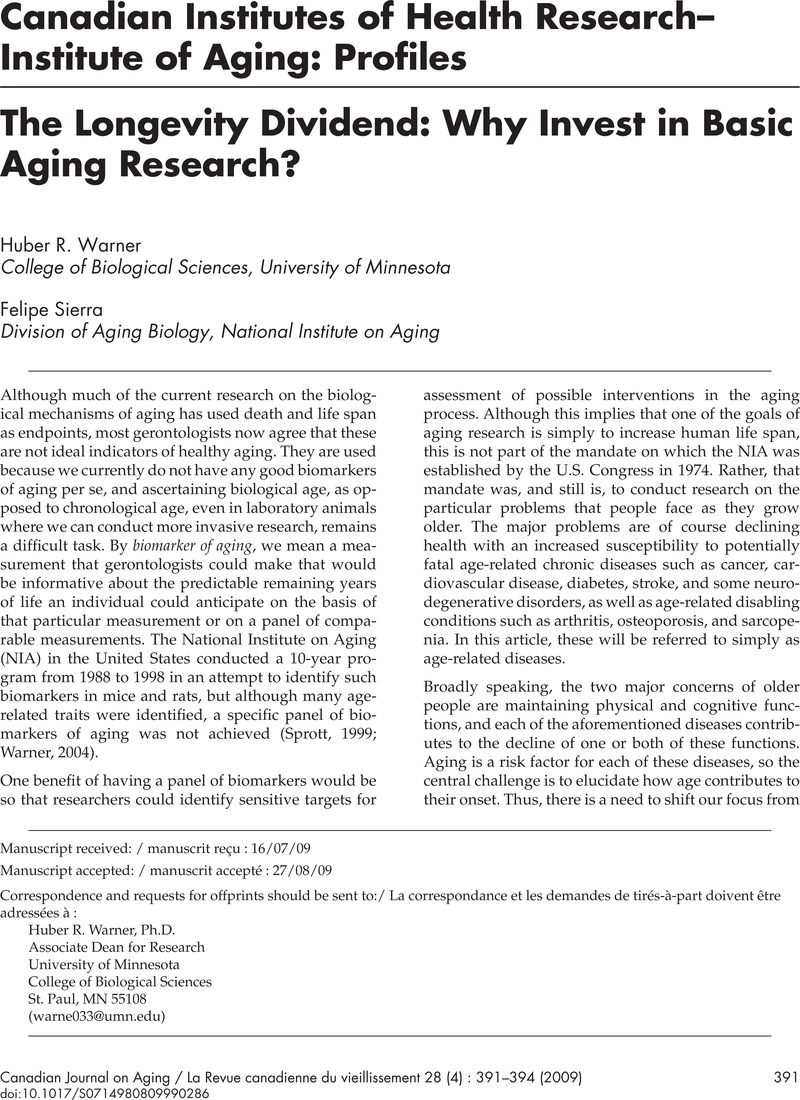Crossref Citations
This article has been cited by the following publications. This list is generated based on data provided by Crossref.
Packer, Nicholas
and
Hoffman-Goetz, Laurie
2012.
Exercise Training Reduces Inflammatory Mediators in the Intestinal Tract of Healthy Older Adult Mice.
Canadian Journal on Aging / La Revue canadienne du vieillissement,
Vol. 31,
Issue. 2,
p.
161.
Makiwane, Monde
Ndinda, Catherine
and
Botsis, Hannah
2012.
Gender, race and ageing in South Africa.
Agenda,
Vol. 26,
Issue. 4,
p.
15.
Reddy, Vasu
and
Sanger, Nadia
2012.
Matters of Age: An Introduction to Ageing, Intergenerationality and Gender in Africa.
Agenda,
Vol. 26,
Issue. 4,
p.
3.
Arum, Oge
Rasche, Zachary Andrew
Rickman, Dustin John
Bartke, Andrzej
and
Vina, Jose
2013.
Prevention of Neuromusculoskeletal Frailty in Slow-Aging Ames Dwarf Mice: Longitudinal Investigation of Interaction of Longevity Genes and Caloric Restriction.
PLoS ONE,
Vol. 8,
Issue. 10,
p.
e72255.
Arum, Oge
Saleh, Jamal K.
Boparai, Ravneet K.
Kopchick, John J.
Khardori, Romesh K.
and
Bartke, Andrzej
2014.
Preservation of blood glucose homeostasis in slow-senescing somatotrophism-deficient mice subjected to intermittent fasting begun at middle or old age.
AGE,
Vol. 36,
Issue. 3,
Arum, Oge
Boparai, Ravneet K.
Saleh, Jamal K.
Wang, Feiya
Dirks, Angela L.
Turner, Jeremy G.
Kopchick, John J.
Liu, Jun‐Li
Khardori, Romesh K.
and
Bartke, Andrzej
2014.
Specific suppression of insulin sensitivity in growth hormone receptor gene‐disrupted (GHR‐KO) mice attenuates phenotypic features of slow aging.
Aging Cell,
Vol. 13,
Issue. 6,
p.
981.
Arum, Oge
Rickman, Dustin J.
Kopchick, John J.
and
Bartke, Andrzej
2014.
The slow-aging growth hormone receptor/binding protein gene-disrupted (GHR-KO) mouse is protected from aging-resultant neuromusculoskeletal frailty.
AGE,
Vol. 36,
Issue. 1,
p.
117.
Arum, Oge
Saleh, Jamal
Boparai, Ravneet
Turner, Jeremy
Kopchick, John
Khardori, Romesh
and
Bartke, Andrzej
2014.
Interaction of growth hormone receptor/binding protein gene disruption and caloric restriction for insulin sensitivity and attenuated aging.
F1000Research,
Vol. 3,
Issue. ,
p.
256.
Arum, Oge
Saleh, Jamal
Boparai, Ravneet
Turner, Jeremy
Kopchick, John
Khardori, Romesh
and
Bartke, Andrzej
2015.
Interaction of growth hormone receptor/binding protein gene disruption and caloric restriction for insulin sensitivity and attenuated aging.
F1000Research,
Vol. 3,
Issue. ,
p.
256.
Vaiserman, A.M.
2017.
Comprehensive Medicinal Chemistry III.
p.
349.
Wareham, Christopher Simon
and
Garcia-Barranquero, Pablo
2023.
Emerging Anti-Aging Strategies.
p.
269.





